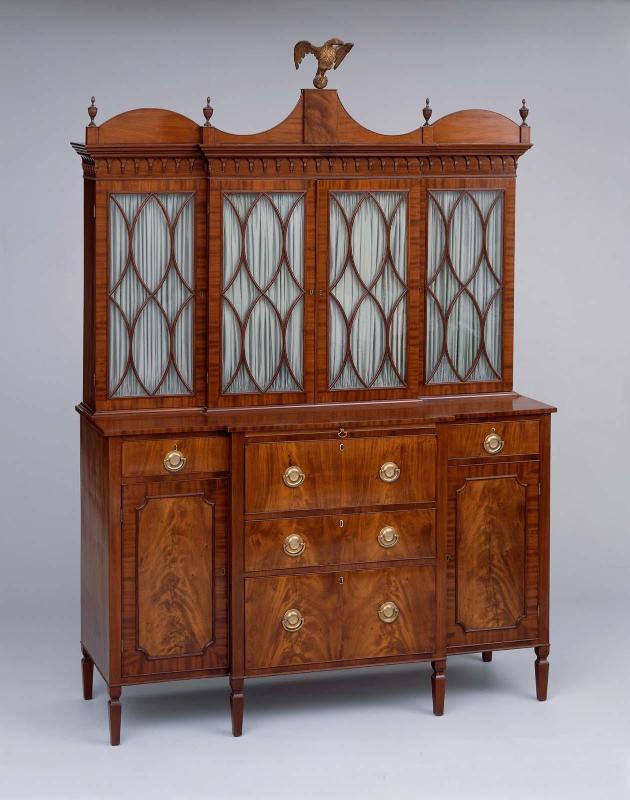Gentleman's secretary
Samuel McIntire
(American, 1757–1811)
1800–10
Object PlaceSalem, Massachusetts
Medium/TechniqueMahogany, mahogany veneer, pine, cedar
Dimensions228.6 x 170.2 x 60.0 cm (90 x 67 x 23 5/8 in.)
Credit LineHelen and Alice Colburn Fund
Accession number26.12
On View
Not on viewClassificationsFurniture
Collections
Thomas Sheraton noted in his "Cabinet Dictionary" (London, 1803) that the gentleman's secretary was "intended for standing to write at." Here, the front of the center drawer falls open to reveal a baize-covered writing surface, small drawers, and pigeonholes for documents. The two cupboards at the sides are fitted with vertical partitions for ledgers in one and with compartments for bottles in the other, as entertaining was a custom of business. The bookcase was lined with (now replaced) fabric to protect the books and ledgers from the sun. This secretary was owned by Clifford Crowninshield, a Salem merchant, and later by his son-in-law James Devereux, who inscribed the names of his ships on the pigeonholes. The eagle finial at the top is attributed to Salem carver Samuel McIntire.
ProvenanceSaid to have been made for Capt. Clifford Crowninshield of Salem, Massachusetts, who built a new house in Washington Square, Salem, in 1805. It was used by his son-in-law James Devereux, as shown by the shipnames inscribed in the pigeonholes, all of which can be traced to his ownership, and it descended to William C. Waters, with whose collection it was sold via dealer Israel Sack to the MFA, January 1926 (Accession Date: January 27, 1926)
about 1780















